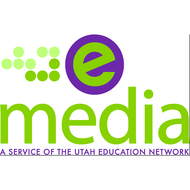
(View Complete Item Description)
This is a final lesson in a unit teaching German food and drink vocabulary and restaurant customs and vocabulary. Students will review the target vocabulary and create a story to present to the class and demonstrate their knowledge of the vocabulary and understanding of German restaurant customs.Utah World Languages Core Standards for ProficiencyLearning Indicator NH.IC.5I can interact with others in everyday situations. c. I can order a meal.Learning Indicator NM.PS.2I can express my likes and dislikes using words, phrases, and memorized expressions. c. I can state my favorite foods and drinks and those I don't like.Learning Indicator NM.PS.5I can present simple information about something I learned using words, phrases, and memorized expressions. c. I can talk about animals, colors, foods, historical figures, or sports based on pictures or photos.Thumbnail photo "Woman buys fruits at a German food market in Munich Ludwigsvorstadt-Isarvorstadt" by verchmarco is licensed under CC BY 2.0.
Material Type:
Assessment,
Homework/Assignment,
Lesson,
Lesson Plan,
Module,
Simulation
Author:
Christina Nelson















